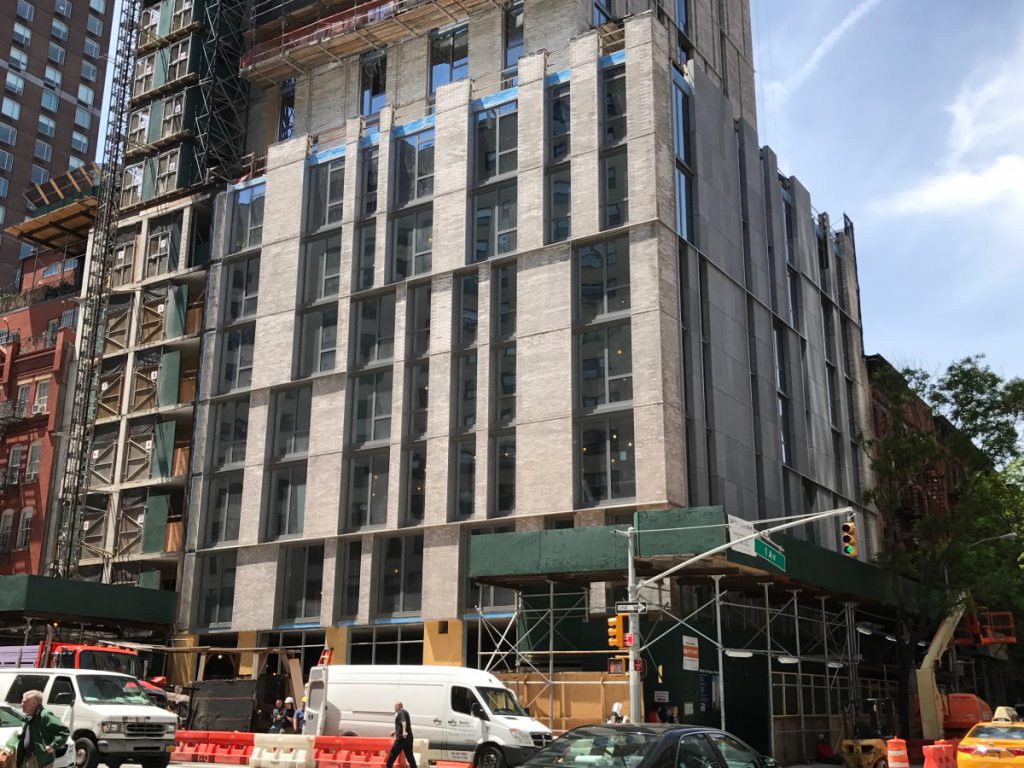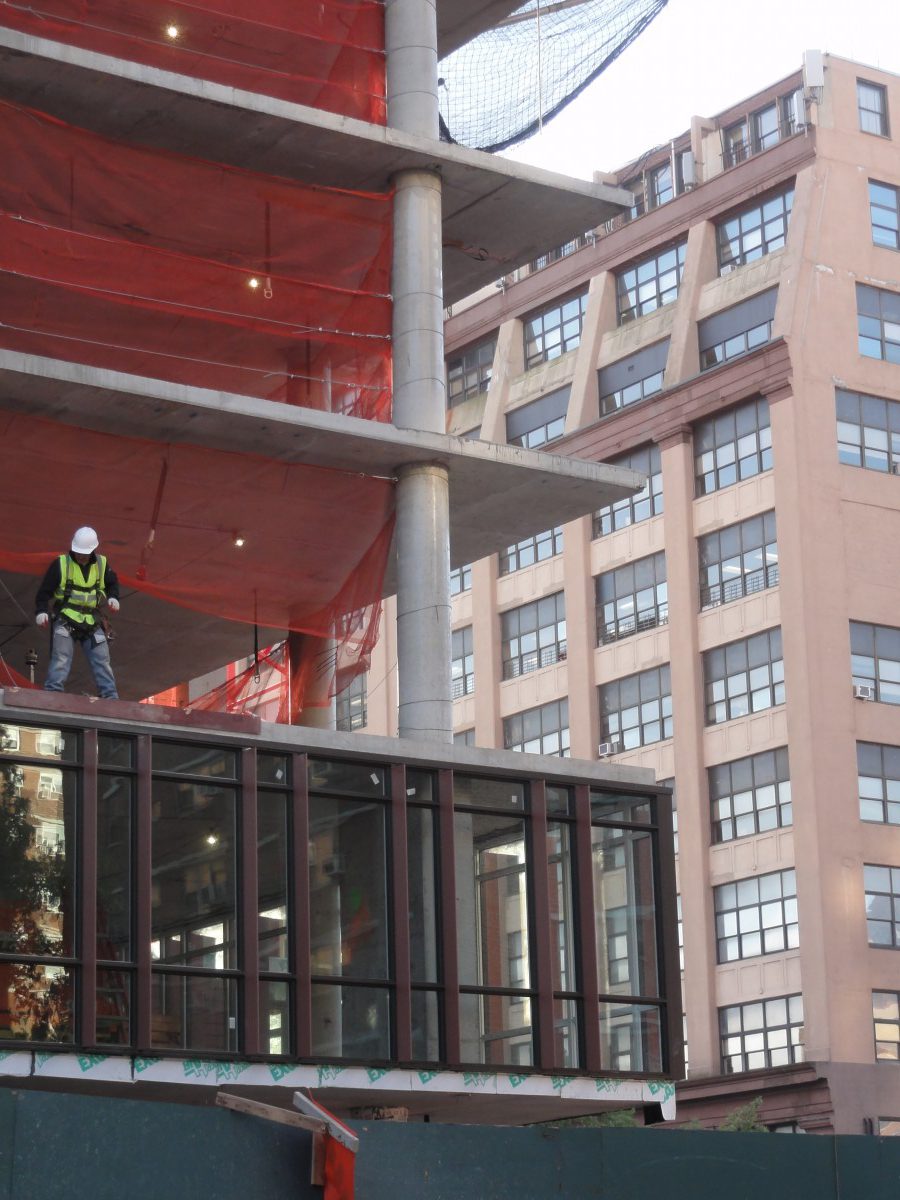The default approach to the articulation of buildings at the current moment is the SHIFTED ELEVATION, where the transparent bays of a curtain wall or apertures in a solid wall jump left or right, change proportion, group and ungroup. This shifting seeks to obscure the structural grid that organizes buildings into rational and efficient bays. The SHIFTED ELEVATION seeks to generate texture and complexity through a superficial treatment.
The systems of shifting are not all equal, with some subtly playing with a readable module. Others seems more random and chaotic. The SHIFTED ELEVATION is a further sign of the continued diminishing of architectural order and its integration with space, structure, and tectonic articulation. Instead the SHIFTED ELEVATION reinforces the primacy of the decorated shed, with its gratuitous complexity and focus on the marketing gimmick. The overly frenzied and unsettled spirit of this current architecture unfortunately reflects our current moment more than we would wish.






Above we see the initial installation of the window wall on this new residential building in Brooklyn. This view shows the base of the building, which has a more transparent envelop than the main tower of the building. The window wall installs between the slabs. The subsequent levels of window wall include an insulated slab edge cover.
In the view below we see the installation progressing. A track is visible that is installed to the underside of the upper slab to secure the top of each floor’s window wall. The lower edge of the window wall locks into the previously installed units on the floor below.


This curtain wall is a retro fit onto an existing building with an exterior masonry wall on the other facades. This facade faces north onto the East River with views of the Manhattan skyline across the river.
The primary structure of the existing building is steel, but the installation of this curtain wall requires extensive modification, including new concrete piers and welded steel plates set at angles to the line of the building frame. This view also shows one worked sawing the existing steel in preparation for the new anchoring system.


This site for a new residential tower is on 2nd Ave in Manhattan, at a low elevation that is within the flood zone. The foundation design consists of a series of caissons drilled to the depth of bedrock (most likely). This foundation approach avoids creating a basement that would be exposed to flooding.
In this view we see the rig drilling a new caisson pier, with the drill inside the steel casing. The rig pushes the casing down as the drill proceeds to temporarily hold the walls of the excavation from collapsing. This pier is tight to the party wall of the adjacent building. With a series of caissons along this party wall, it is likely that underpinning can be avoided.
An earlier site view below shows the drill as it is aligned with another casing.


Upper East Side New Residential Tower extends over existing pre-war office building. Diagonal column shifts load from cantilevered corner to lower frame and foundation around the existing building. Diagonal column will likely be covered with conventional punched openings and not be visible from exterior when exterior cladding is added.

Professor Montgomery's Construction Blog















